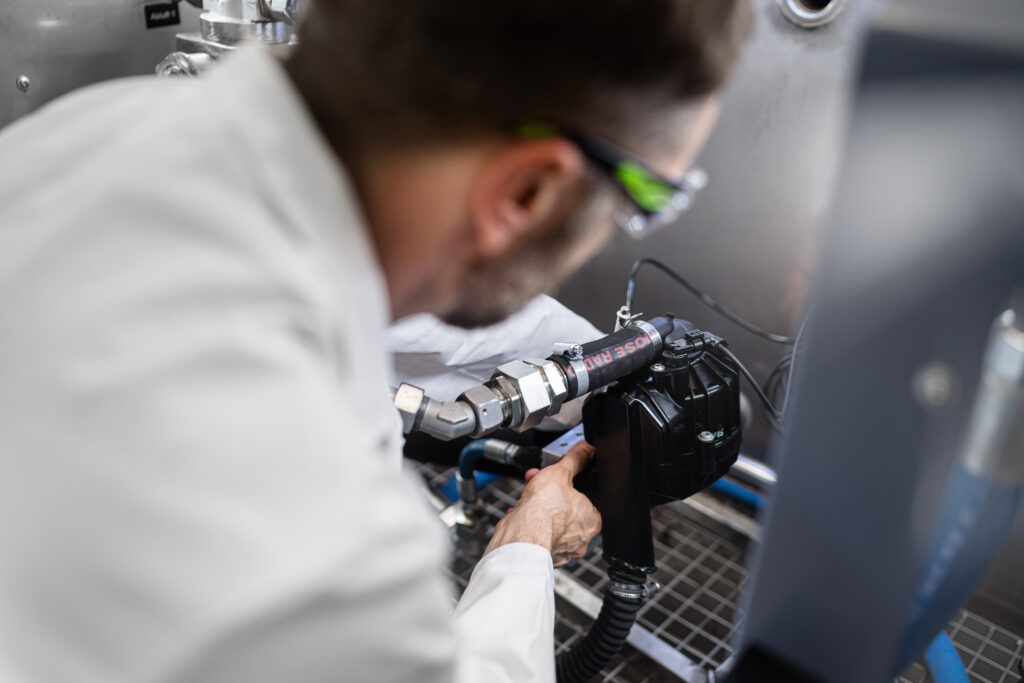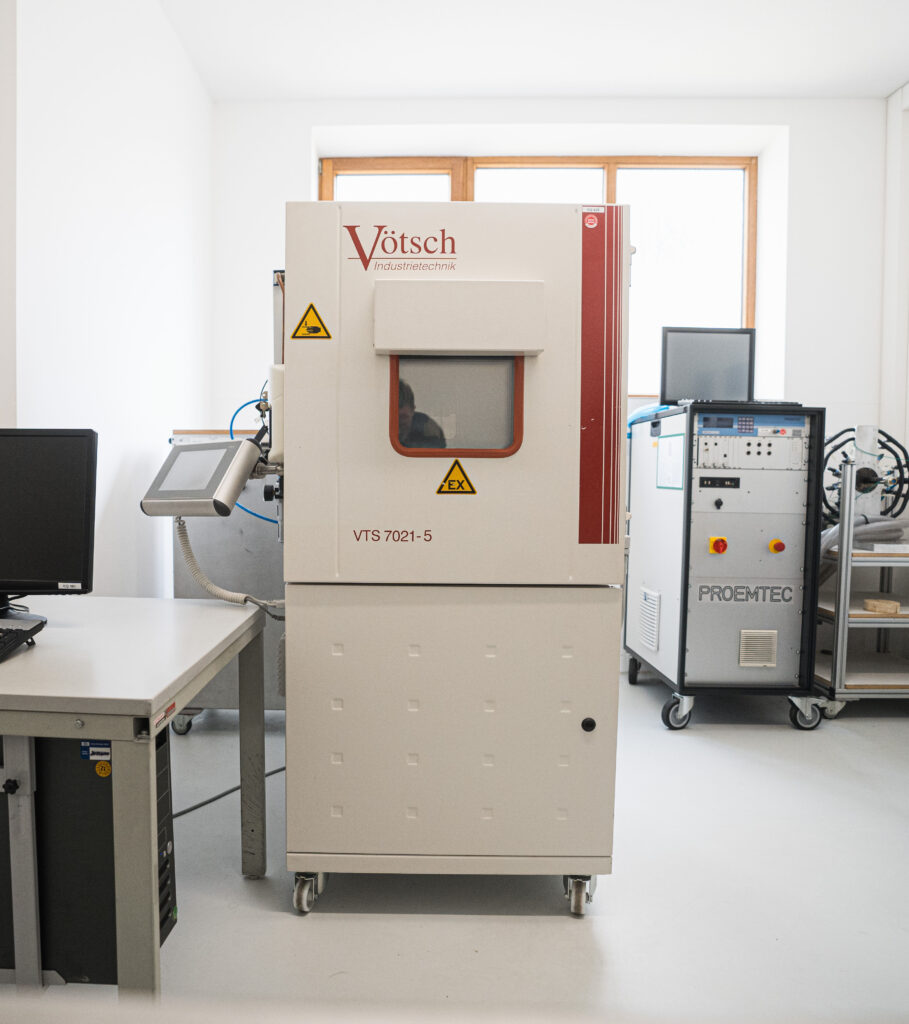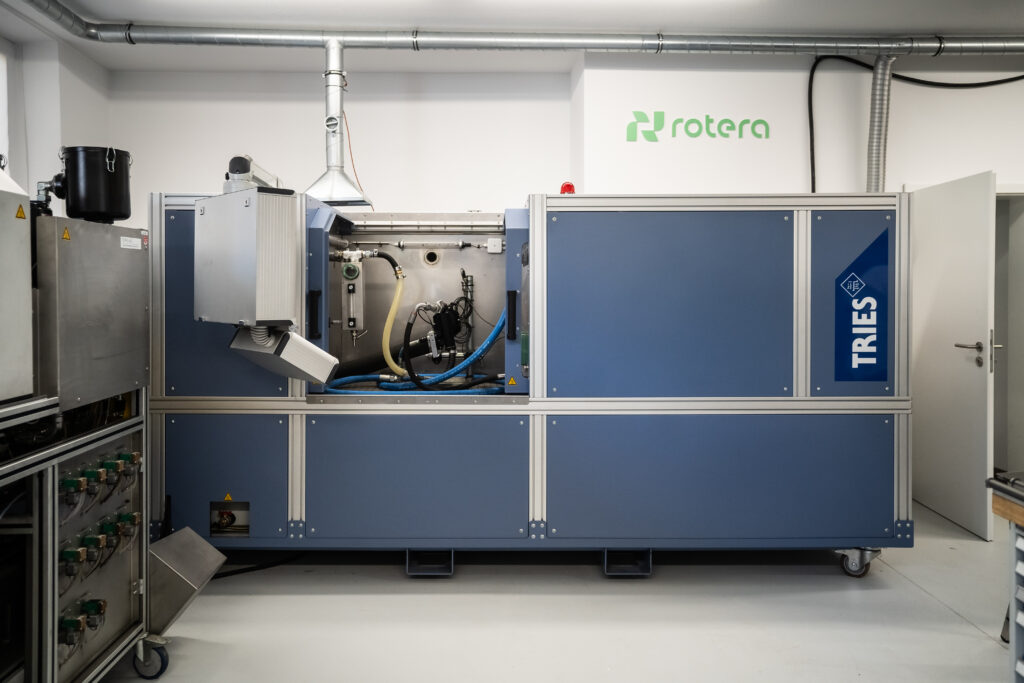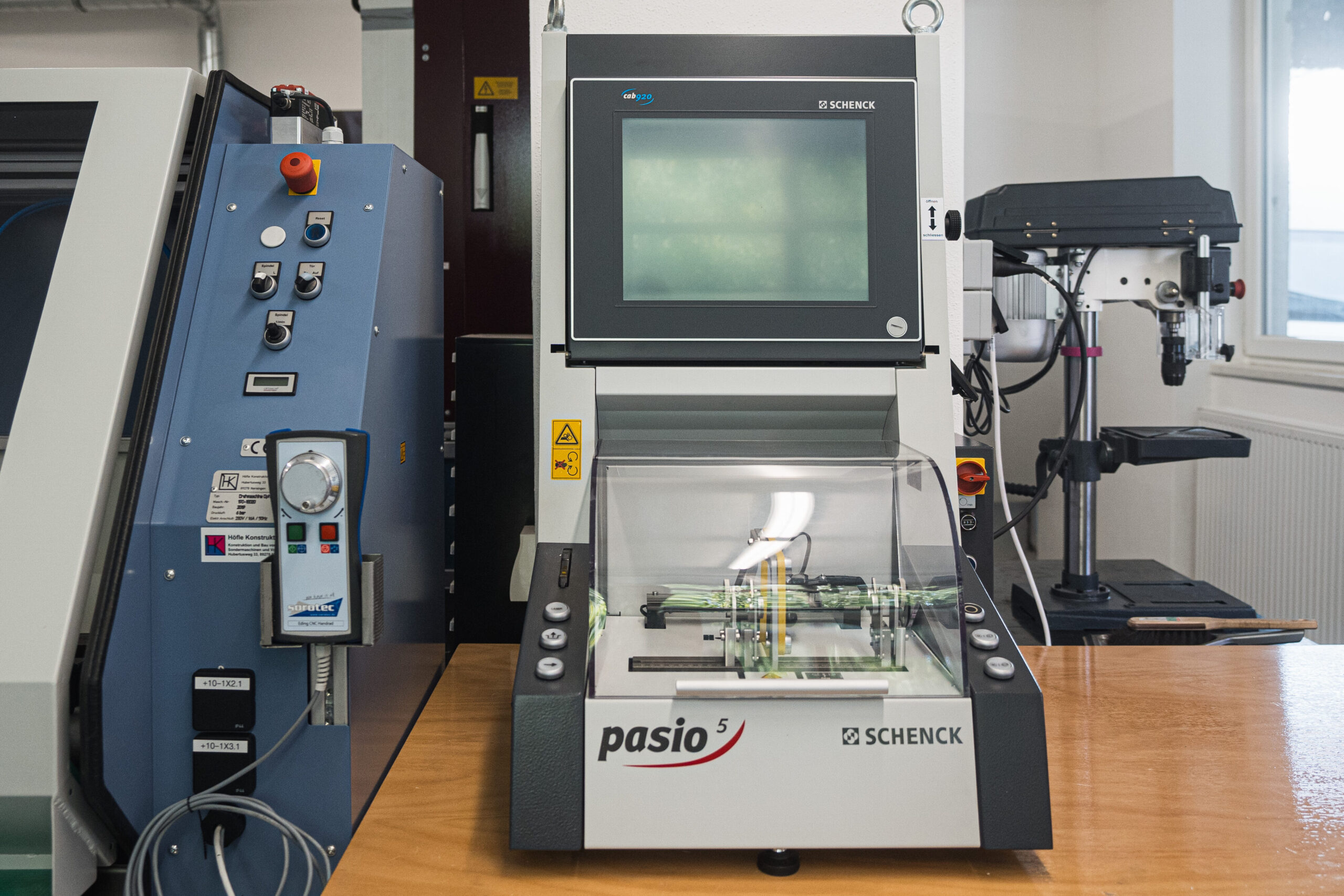
R&D and Testing Services

R&D Services
Beside developing our latest technologies in disc stack and centrifugal separation, our R&D facilities in Sweden and Germany offer testing and consultancy services for various industries. For the automotive industry, we offer testing and consultancy of passive solutions and Active Crankcase Ventilation Systems (ACCVS), including air oil separation and valve technologies. Sealing and technical plastic design and validation are also part of our portfolio.
Our laboratories are fully outfitted with cutting-edge testing and simulation equipment including spectrometers to analyse particle distribution and separation efficiency, rotor dynamic test rigs, test benches to simulate icing or soot sedimentation, and special endurance testing equipment to validate and prove overall product lifespan.
Below are just some examples of our test benches:

Temperature chamber
For heat ageing and thermal cycling testing. Simulation of operating temperatures of assemblies. Long-term simulation using excessive testing conditions.
Technical data:
- Temperature range: -70 to +180°C
- Test room volume: 200 l
Thermal cycle testing
Simulation of operating temperatures of assemblies. Long-term simulation using excessive testing conditions.
Technical data:
- Samples are stored in temperature chamber for thermal cycle testing.
- Oil (enriched with oxygen) is guided through samples.
- Oil-circulation is controlled by oil temperature.
- Oil reservoir inside climate chamber.
- Temperature range: -70 to +180°C


Air-Oil-Separation (AOS) efficiency test bench I
Simulation of real engine conditions in the field of crankcase ventilation. Determination of efficiency and design verification of AOS components.
Technical data:
- Optical particle counter: 0.2 to 105 µm (2*106 particles/cm³)
- Quasi simultaneous particle measurement
- Volume flow: 10 to 300 l/min
- Temperature: up to 120°C
- Simulation of tilt angles +/- 40°
- Flexible fixation for specimens
Air-Oil-Separation (AOS) efficiency test bench II
Fully automated simulation of real engine conditions for crankcase ventilation and pressure-regulating valve characteristics. Determination of efficiency and design verification of AOS components.
Technical data:
- Optical particle counter: 0.2 till 105 µm 2*106 particles/cm³
- Quasi simultaneous particle measurement
- 10 – 300 l/min volume flow
- Temperature up to 120°C
- Oil input 15 till 450 g/h
- Simulation of tilt angles +/- 40°
- Flexible fixation for specimens
- Valve measurement
- Turbo charger simulation
- Fully automated
- Automated data logging


Durability test bench for Active-Air-Oil-Separators (AAOS)
Endurance testing for hydraulic-driven disc stack separators. Simulation of operating temperatures in AAOS assemblies. Long-term simulation using excessive testing conditions.
Technical data:
- Circulation of tempered oil:
- Volume flow: 3,0 up to 15,0 l/min
- Oil temperature: -20°C up to +150°C
- Oil pressure: 1,0 up to 25,0 bar
- Circulation of tempered air:
- Volume flow: up to 600 l/min
- Air temperature: RT up to +150°C
- Rotation speed control & monitoring
- Recording of all measured data
Sooting test bench
Test bench to check AOS systems for sooting. Simulation of engine conditions (i.e., if or when sooting occurs and how it affects AOS systems function).
Technical data:
- Automatic control of volume flow and pressure drop
- Control of oil and soot mass flow
- Possibility to generate soot and oil mists in different concentrations
- Reproduction of customer’s engine conditions
- Volume flow up to 200l/min
- Air temperature up to 120°C
- Pressure drop of specimens up to 150 mbar
- Oil mass flow up to 60g/h
- Soot mass flow 0,2 – 25g/h
- Automatic documentation


Cascade impactor
Measuring airborne particle concentration and size distribution. Determination of efficiency and design verification of AOS components.
Technical data:
- Electrical low-pressure impactor
- Particles Measurement in 14 size fractions in the range from 6 nm to 10 μm
- Real-time monitoring of particle sizes
Balancing machine
Test bench to identify possible imbalances and to balance rotating bodies (e.g., a disc stack).
Technical data:
- Max. rotor weight 5 kg
- Max. rotor diameter 150 mm
- Max. rotor length 240 mm
- Smallest achievable residual unbalance 0,1 gmm/kg

Rotera technology for your application
Connect with our product team to discuss your application.